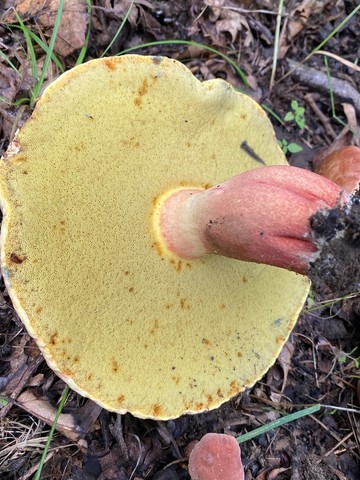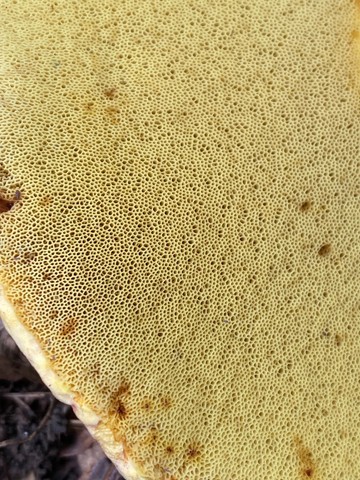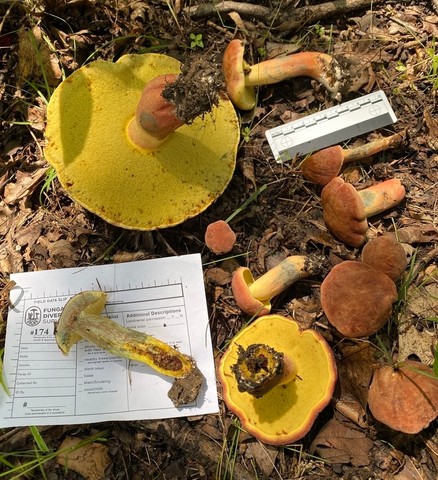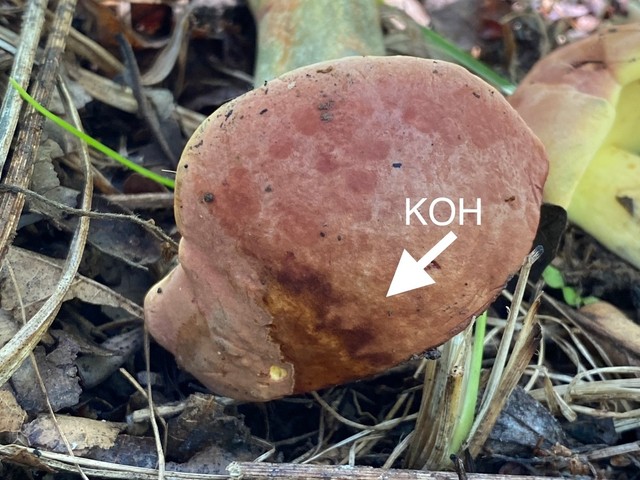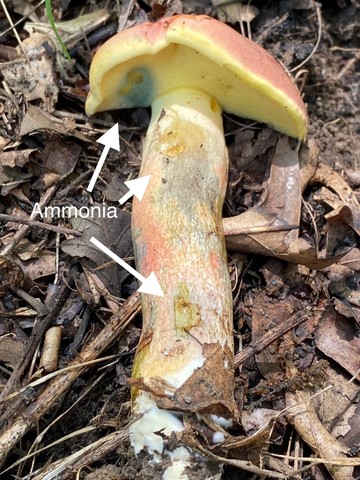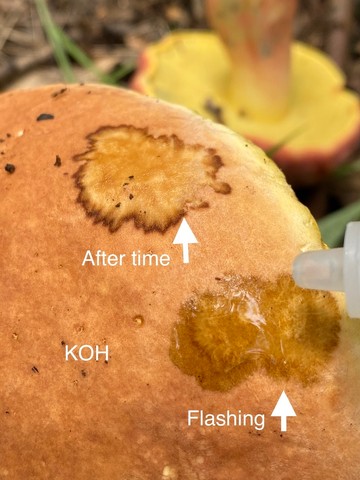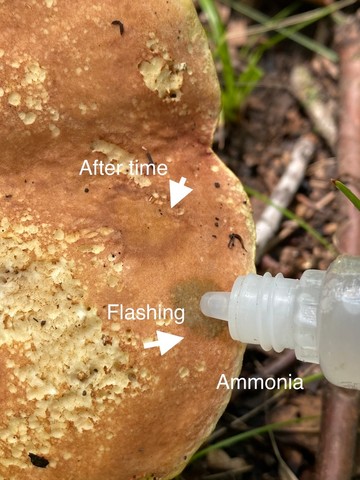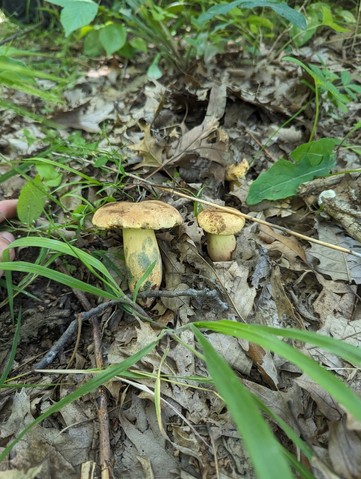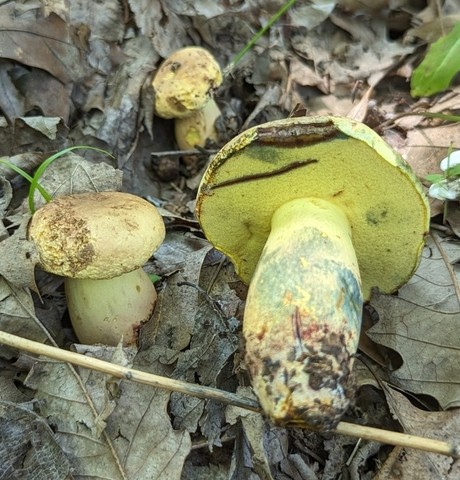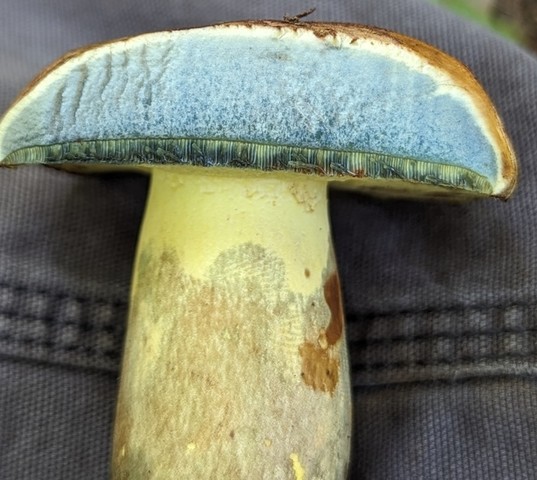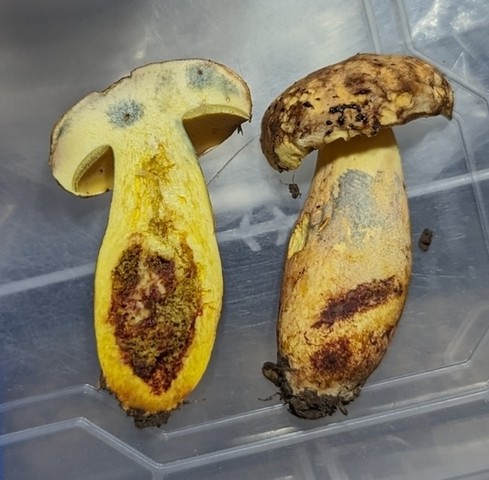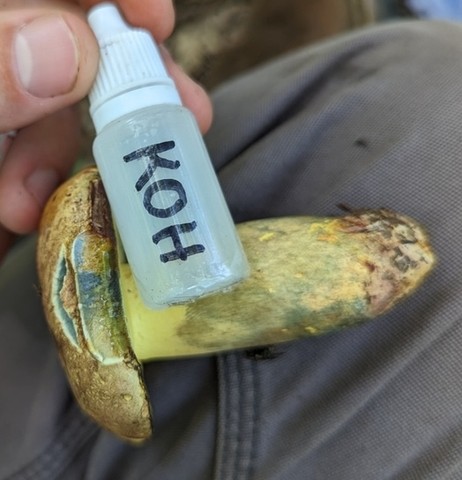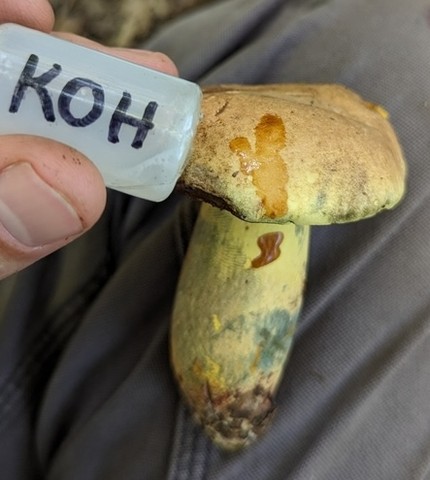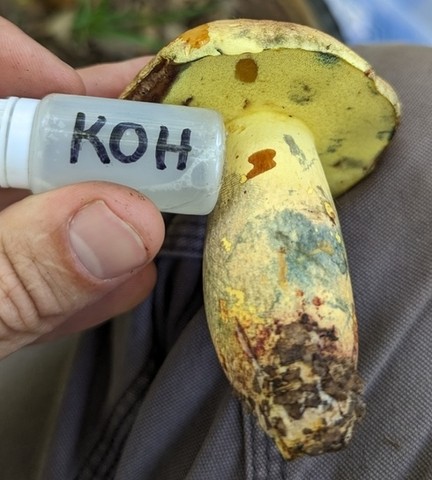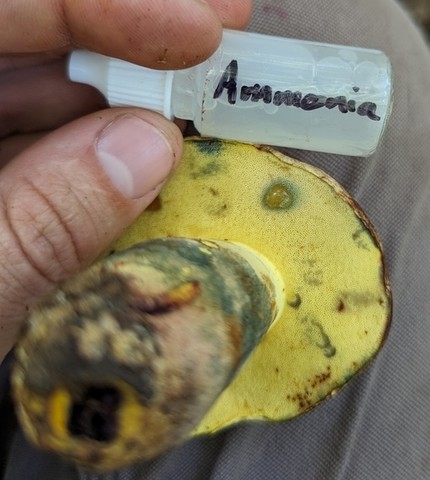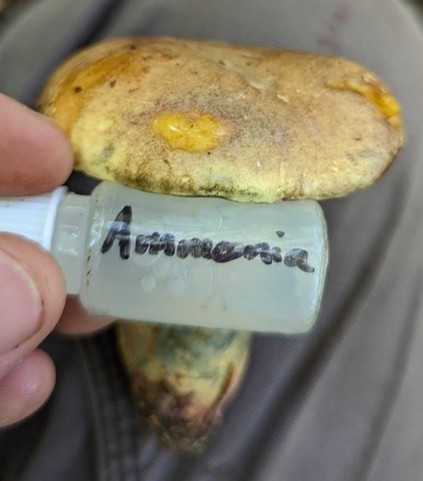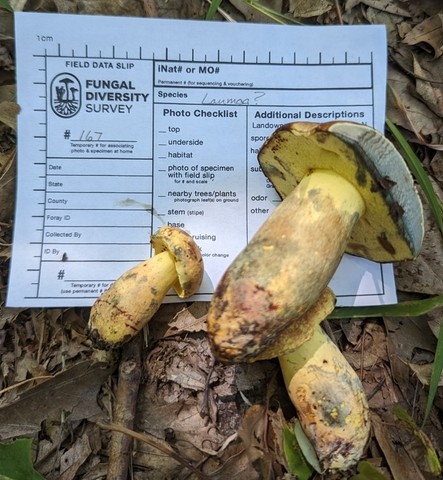Lanmaoa pseudosensibilis
Life > Fungi > Basidiomycota > Agaricomycotina > Agaricomycetes > Agaricomycetidae > Boletales > Boletaceae > Lanmaoa
Description
Lanmaoa pseudosensibilis is a mycorrhizal bolete that can be found in forests (especially Oak forests) from July-September. Known to the eastern US. When sliced in half, the yellowish contents turn blue. It has a shallow pore surface which is characteristic of Lanmaoa. The pore surface turns from yellow then bruised blue then brownish with age.
The Bolete Filter considers this mushroom edible (Pavelle, 2015). Please take great care to get a solid identification to distinguish it from other toxic boletes.
July 9th, 2023 Field Notes - Indian Cave State Park:
Growing gregariously in low open mixed oak/hickory woodland.
Nearby trees: Red Mulberry, Elm, Red Oak, Chinkapin Oak, Eastern Redbud, Shagbark Hickory, and American Hophornbeam.
- Stipe with slight red blush at the base. Flesh in stipe where damaged by insects red.
- Tube layer shallow.
- Hymenium, stipe, and inner flesh quickly bruising blue (lighter blue on stipe). Bruises later turning brown, then later fading back around to original color.
- KOH: orange on pileipellis, flesh, and hymenium.
- Ammonia: blushing blue to pink around the area of contact on the pileipellis and hymenium.
DNA Barcode ITS:
GAACGCACCTTGCGCTCCTTGGTATTCCGAGGAGCATGCCTGTTTGAGTGTCATTGAATTCTCAACCCATGCCTTGATTGACTTTCGAGGCATGGCTTGGAGTTGGGGGTTGCTGGCAGCGAAAAGCTTGTCGGCTCTCCTGAAATGCATTAGCAAAGGACGGCAAGTCTTTGACGTGCACGGCCTTCGACGTGATAATGATCGTCGTGGCTGGAGCGTCGGACATGCATGAATCGTTCGTGCTTCCAATCCATATGCATTCCCTAGCTCAAGTGAGTTTTCTTAGCTACTAGTTGGTCGCGAGGCCGACGAACGTTGGGCAAGCTTGCTTTTGCTGGGTTGGCATTTTCGAAACTTGACCTCAAATCAGGCAGGACTACCCGCTGAACTTAA
July 11th, 2023 Field Notes - Indian Cave State Park:
Growing gregariously (locally abundant) from soil in mixed oak/hickory woodland edge.
Nearby Trees: Northern Red Oak, Bur Oak, Chinkapin Oak, Black Oak, and Ash.
- All surfaces bruising a light faded blue, later to brown.
- Pileipellis subtomentose, ranging from dull brick red in young specimens to a lighter shade when mature. Many specimens with a yellowish margin, enrolled on younger caps.
- Interior flesh turning blue from upper half of stipe to the cap while the other half turning red where insects damaged flesh.
- Smell: not distinctive
- Taste: not distinctive
- KOH: mustard yellow at apex of stipe and darer orange near the base. Orange on pileipellis with darkened brown margin around area of contact.
- Ammonia: Blue on hymenium, darkening upper stipe and yellowish-orange, and flashing blue, then dark brown on pileipellis.
References
Gaswick, W. (2025). Key to Boletes of the Chicago Area. Nirmi.org. https://www.nirmi.org/keys/boletes/key.html
Kuo, M. (2015, January). Boletus pseudosensibilis. Retrieved from the MushroomExpert.Com Web site: http://www.mushroomexpert.com/boletus_pseudosensibilis.html
Pavelle, S. (2015, July 23). Lanmaoa pseudosensibilis. The Bolete Filter. https://boletes.wpamushroomclub.org/product/boletus-pseudosensibilis/
Wu, G., Zhao, K., Li, Y. C., Zeng, N. K., Feng, B., Halling, R. E., & Yang, Z. L. (2016). Four new genera of the fungal family Boletaceae. Fungal Diversity, 81, 1-24. https://doi.org/10.1007/s13225-015-0322-0
Created October 14, 2025 at 3:03 PM

